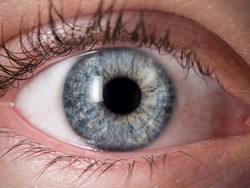Pupil response, brightness and thoughts
The pupil is the eye’s aperture: a hole allowing light through the iris and onto the retina. The pupil automatically adjusts depending on brightness; measurement of pupil size (pupillometry) is a common tool for diagnosing visual defects and for indicating psychological arousal. The EU-funded ACTPUP (The active pupil: The role of pupil size in active vision) project investigated how changes in pupil size reflect environmental interactions. Such changes depend on what is looked at, plus the team also tested whether one’s thoughts have an effect. Researchers first focused on the role of visual attention in the pupil’s light response. The study examined whether a bright light in the corner of one’s eye causes the pupil to constrict. To test the idea, the team used a display divided into light and dark halves. Viewers focused on a central spot, but attended to one side of the screen. When participants attended to the light side, pupils constricted as predicted. The experiment thus showed the importance of attention. A further hypothesis involved the linkage between pupil response and eye movement. Participants directed their eyes towards a light or dark surface, but researchers flipped the screen. Although subjects may have tried to look at one side, their eyes arrived at the opposite side. Preparation to move one’s eyes towards brightness caused a pupil constriction, yet the movement towards darkness did not. The team concluded that pupillary light response anticipates eye movements. Finally, researchers assessed whether keeping a bright object in memory would cause a pupillary constriction. Participants memorised sets of either bright or dark stimuli. The pupil responded to the sight of a bright object for encoding in memory, but not to the actual memory. The observation contradicts the theory about the supposed link between visual attention and working memory. ACTPUP research may find practical application in computer text-entry interfaces, whereby users could select letters by looking at them obliquely. The computer would vary the brightness of letters, measure pupil response, and determine letter choice; initial testing proved the concept’s feasibility.



